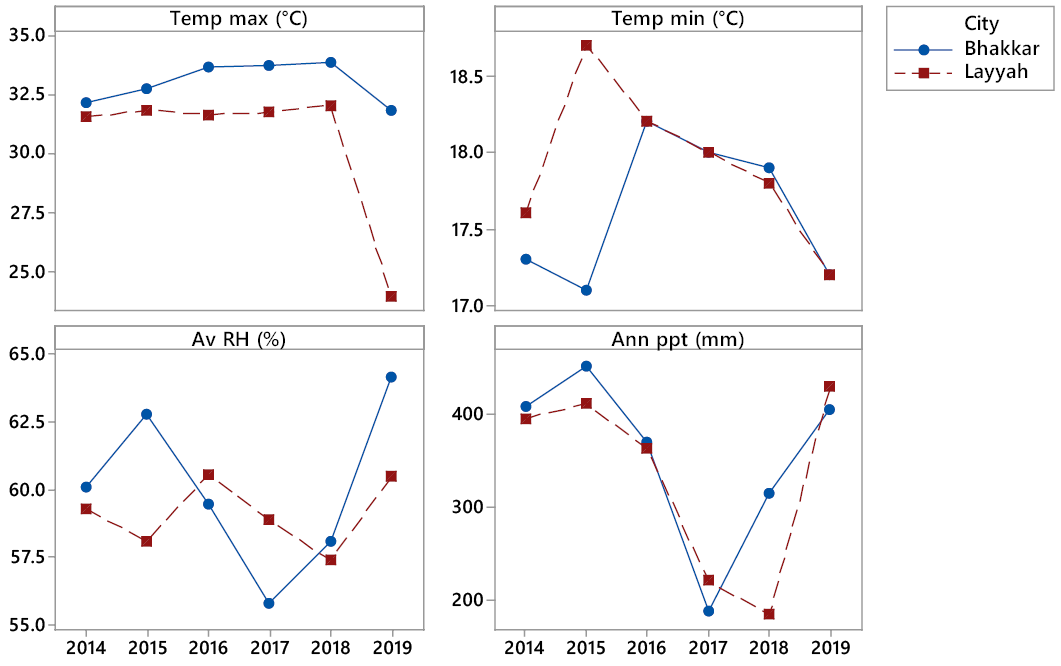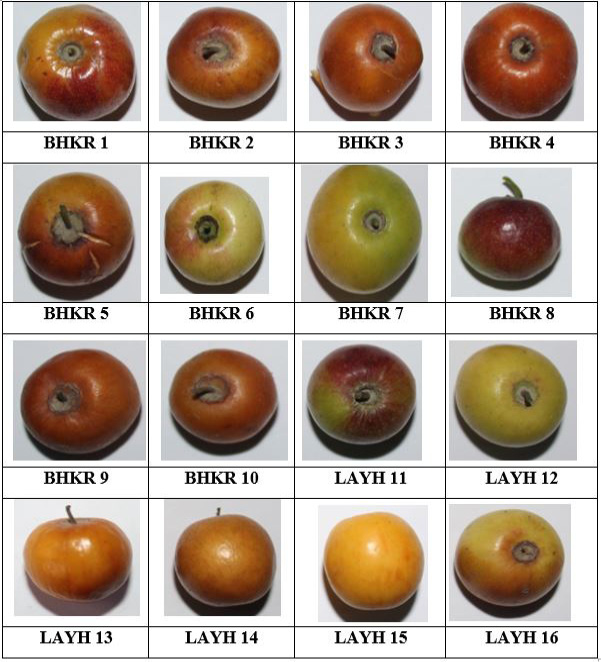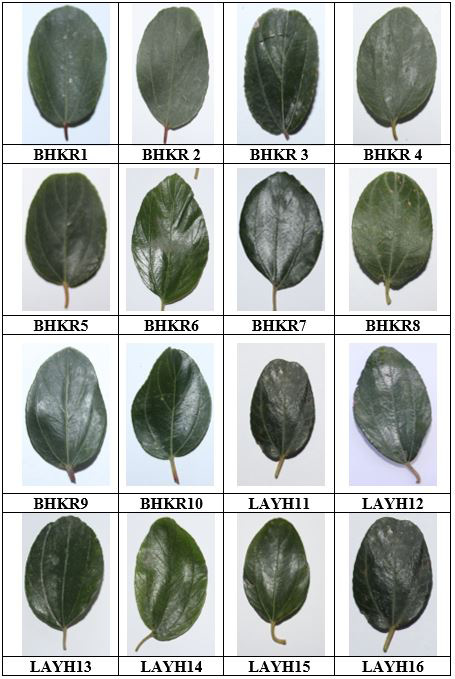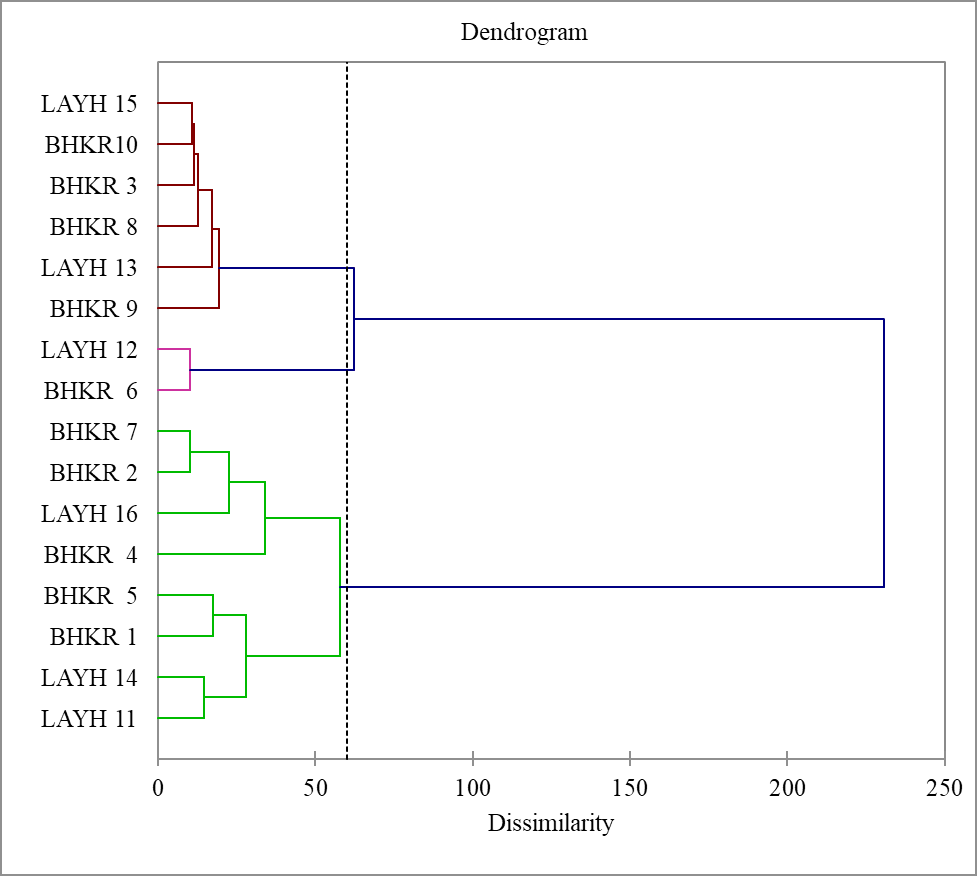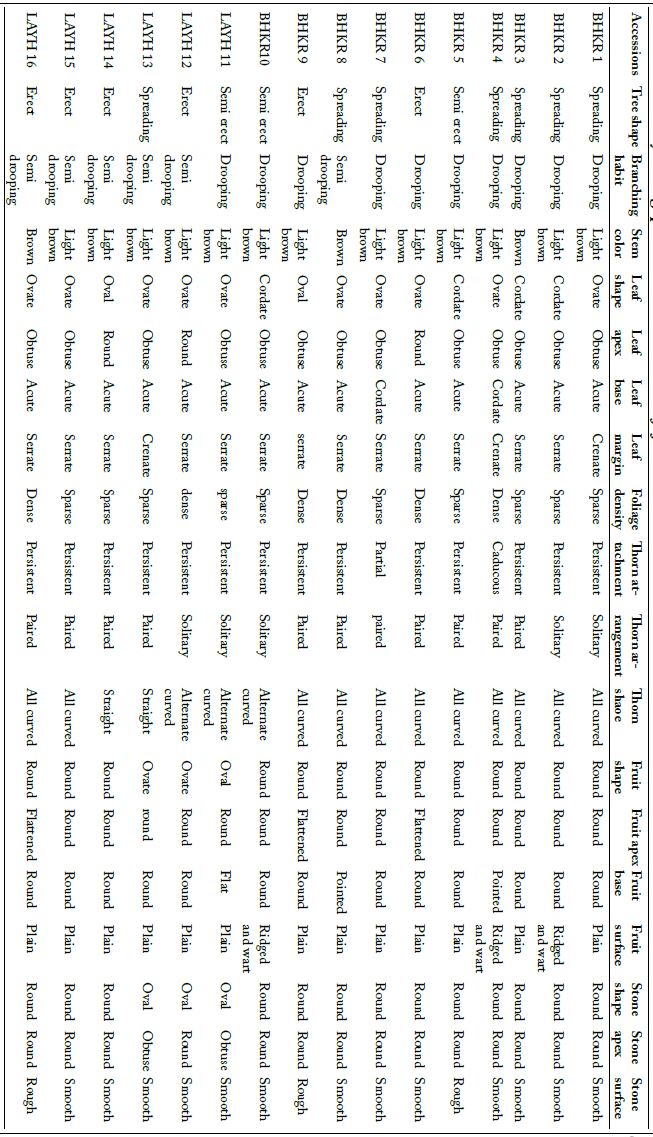Biodiversity Evaluation among Wild Jujube (Ziziphus nummularia (Burm. F.) Population in Thal Desert of Pakistan
Biodiversity Evaluation among Wild Jujube (Ziziphus nummularia (Burm. F.) Population in Thal Desert of Pakistan
Naseem Sharif1,2*, Imran Muhammad Siqqique2, Muhammad Kashif Raza3, Urwa Irshad1, Muhammad Ikhlaq Khan4, Ammara Noreen4 , Muhammad Ahsan Qureshi1, Mohsin Abbas5, Muhammad Maaz Aziz5, Sitwat Riaz5, Komal Aslam5 and Naseem Akhtar6
Map of Punjab province (Pakistan). Colored areas (red and green) are showing the collection regions of 16 wild jujube accessions from Thal desert.
Meteorological parameters of germplasm collection sites (2014 to 2019): Tmax: Average annual maximum temperature (°C), Tmin: Average annual minimum temperature (°C), Av. RH: Average annual humidity (%), Ann pp: Annual total precipitation (mm). Source: Regional Metrological Centre, Lahore, Pakistan.
Fruits phenotypic features of wild jujube germplasm selected from Thal desert.
Leaf diversity in wild jujube germplasm selected from Thal desert.
PCA plot based on the first two components for morphological quantitative traits of 16 wild jujube accessions of Thal desert.
Dendrogram for 16 wild jujube accessions based on morphological traits.
Variability among qualitative traits of 16 wild jujube accessions of Thal desert.




